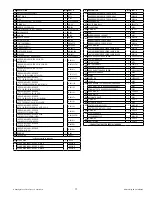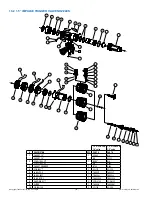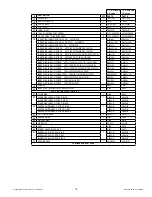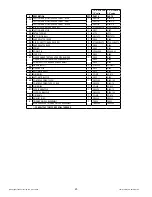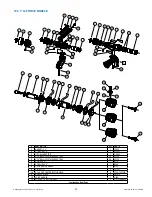
©Copyright Task Force Tips LLC 2011-2018
LIG-010 May 29, 2018 Rev05
7
4.0 FLOW CHARACTERISTICS
4.1 FIXED FLOW
A fixed flow G-Force nozzle has one fixed discharge orifice and a flush setting. A fixed flow G-Force is flush able with the selector
ring. Figure 4.2A-D shows flow and pressure graphs for the G-Force Fixed nozzles.
4.2 SELECTABLE FLOW
A selectable G-Force nozzle has several fixed discharge orifices and a flush setting. A particular orifice is selected by rotating the
selector ring. Figure 4.2A-D shows flow and pressure graphs for the G-Force Selectable nozzles.
0
20
40
60
80
100
120
140
0
20
40
60
80
100
120
140
160
180
200
220
Flow (gpm)
Pressure
(psi
)
0
1
2
3
4
5
6
7
8
9
0
100
200
300
400
500
600
700
800
Flow (LPM)
Pressure
(BAR
)
A
B
C
D
E
FLUSH
A
B
C
D
E
E
150 GPM @ 100 PSI
570 l/min @ 700 kPa (7 bar)
FIXED GALLONAGE
SELECTABLE GALLONAGE
G**A**
G**C**
60
30
95
150
125
GPM @ 100 PSI
Figure 4.2A
1.5” G-Force 100 psi Fixed and Selectable Nozzles
3.2 SPECIFICATIONS
3.2.1 MECHANICAL
1.5”
1.0”
1.0”
HIGH PRESSURE
Maximum operating pressure (with valve shut off) 370 psi / 25.5 bar 370 psi / 25.5 bar
580 psi / 40.0 bar
Operating temperature range of fluid
33 to 120º F / 1 to 50º C
Storage temperature range
-40 to 150º F / -40 to 65º C
Materials used
Aluminum 6000 series hard anodized MIL8625 class 3 type
2, stainless steel 300 series, nylon 6-6, nitrile rubber
3.3 NOZZLE COUPLINGS
Many inlet couplings such as NH (National Hose) is standard or NPSH (National Pipe Straight Hose) and other threads can be
specified at time of order.
CAUTION
Nozzle must be mated to a hose line with matched threads. Mismatched or damaged threads may
cause nozzle to leak or uncouple under pressure and could cause injury.
CAUTION
Dissimilar metals coupled together can cause galvanic corrosion that can result in the inability
to unscrew the threads or complete loss of thread engagement over time. Per NFPA 1962, if
dissimilar metals are left coupled together an anti-corrosive lubricant should be applied to the
threads. Also the coupling should be disconnected and inspected at least quarterly.
3.4 USE WITH SALTWATER
Use with saltwater is permissible provided nozzle is thoroughly cleaned with fresh water after each use. The service life of the nozzle
may be shortened due to the effects of corrosion and is not covered under warranty.

















